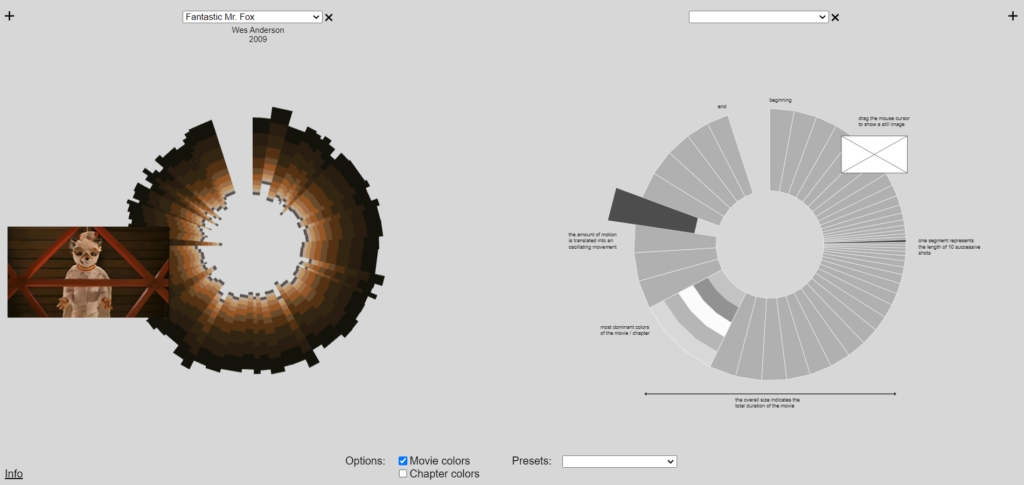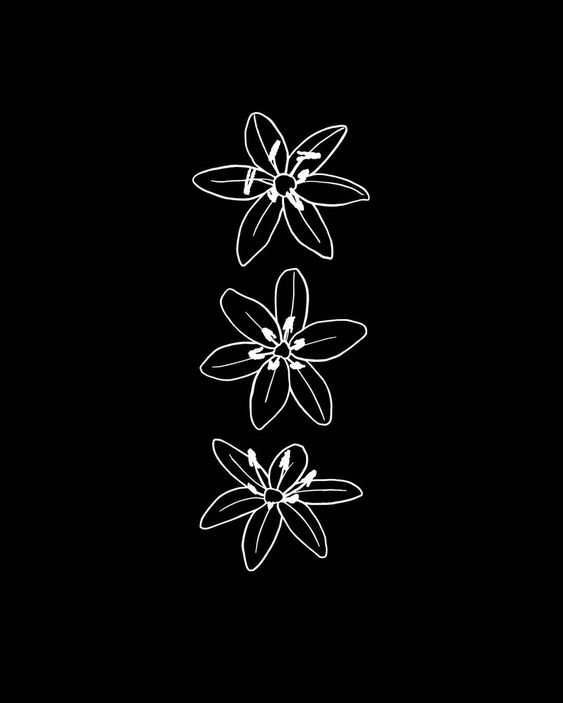Cinemetrics is a data visualisation tool used to collect data about films, film editing techniques and editing style. According to the Cinemetrics website, the tool was designed by Yuri Tsivian and Gunars Civjans in 2005 to combine the world of art and film with the world of numbers, by timing shots and calculating the average shot length of a film. Tsivian states that by calculating this figure, we can not only make informed comparisons between films but also explore the ‘internal dynamics’ or narrative structure of a specific film (Tsivian, 2007). When gathering information about this tool, an abundance of research articles, case studies and other academic works emerge. These works touch on a multitude of engaging topics for those interested in taking a quantitative approach to film studies and analysis and can be found on the Cinemetrics website’s ‘Measurement Theory’ page as well as through standard academic publications. Examples of this work include comments from Cinemetrics scholar Barry Salt on statistical film style analysis (Salt, no date) and the definition and calculation of the metrics used by the software (Salt, 2011), as well as a thorough examination of the software’s data analysis by applied statistician, Mike Baxter (Baxter, 2014). The launch of the Cinemetrics project has fostered a growing community of researchers focused on the measurement of contemporary film and the quantitative study of film and film editing history. This community includes creative developer and media artist Frederic Brodbeck, who created his own site on which he visualises film measurement data such as movement within shots and dominant colours to display as a ‘digital fingerprint’ for each film analysed. The nature of this research is exciting, especially in the Digital Humanities sphere. The Cinemetrics tool facilitates users to measure a film, store these measurements in a public database, visualise their collected data and compare data with others as part of a collaborative online community. As a result of these features, the tool can be used to conduct scholarly research on anything from the historical and political considerations of colour in film to the evolution of film editing techniques and how they are shaped by or align with our ever-shortening attention spans. This new wave of film analysis and measurement allows researchers to effectively analyse filmmaking and editing styles and make meaningful qualitative conclusions based on concrete quantitative data such as average shot length, frequently used images, colour, shot movement etc.
Cinemetrics is free to use and does not have a paywall at any point during the process of data collection and visualisation. It is also not necessary to deploy your own server to access or use the tool. Saving collected data locally before uploading it to the Cinemetrics server is advised, however. Cinemetrics is considerably older than other similar tools such as ClipNotes and Frederic Brodbeck’s own Cinemetrics site. This is evident by the site’s dated graphics and inability to support most modern streaming platforms such as YouTube, Vimeo or Netflix without the user first having to install the VLC media player plugin. However, as a result of the considerable age of the tool, it is very well documented by both its users and its founders. In the original proposal for the start-up grant that would go on to support the creation of the Cinemetrics project, Tsivian outlines the main objective of the tool, “to create a digital platform for informed, comprehensive and collaborative research in the history and theory of film editing,” (Tsivian, 2013, n.p.). In the proposal, discourse between the Cinemetrics team and a team of statisticians is documented, including specific questions that were raised by the statisticians regarding the calculation of the average shot length in a film and comparison between data across the database. The entire creation process of Cinemetrics from start to finish is publically documented in a transparent and clear manner, including the challenges faced during the process as well as the ways in which the software has been updated and improved to improve user interface and accuracy.
Cinemetrics is a tool that allows users a substantial amount of control over their data collection process. Working with raw quantitative data means that the results of this data collection are easy to compare amongst different films and are an objective foundation for further thought about a particular film or filmmaking style. Brodbeck’s Cinemetrics site does display a more engaging, modern visualisation of collected data, however the quantitative data that informs his visuals are not immediately visible. This means that the graph format used is quite vague, leaving room for the subjective interpretations of viewers. Cinemetrics focuses primarily on ‘hard data,’ while Brodbeck’s site embraces the ‘soft data’ of film measurement. Arguably, Cinemetrics’ focus on ‘hard’ quantitative data may facilitate reliable and grounded conclusions more so than the use of ‘soft’ data such as colour, used to support colour theory analysis. Although ClipNotes does not have many overlapping features with Cinemetrics, as it is primarily an annotation tool, the software has a similar database of XML files, mostly created by film students, in which they analyse the audiovisual patterns and motifs in a specific film. Similar to the differences between Tsivian and Brodbeck’s Cinemetrics sites, Tsivian’s Cinemetrics database holds a wider, more detailed range of concrete data than ClipNotes.


*Tsivian and Civjans’ Cinemetrics (top) vs. Brodbeck’s Cinemetrics (bottom)
The YouTube tutorial for using the Cinemetrics, provided on their website is currently private, however, finding an up-to-date roadmap for the tool before using it is quite accessible for a first-time user of the site. As explained on the site, the Cinemetrics software works as a stopwatch, recording timestamps with the click of a mouse as it runs alongside the film. Once a film is viewed once, Cinemetrics presents the viewer with some simple data about the film, including its runtime, the number of shots and the average shot length. Users can view additional data as well as the graphs associated with it by submitting this basic data to the Cinemetrics database server, where it is automatically analysed, stored and published (Cinemetrics – Tool, no date). Tsivian also includes tips to help guide first-time users of the software on the Cinemetrics website. The software seems relatively stable when looking at the discussion board on the website. Users have had problems running the software, however, members of the Cinemetrics team are very active on the discussion board and reply to issues promptly and proactively for the most part. Cinemetrics is very much an interactive software, ensuring that when a problem arises, there will most likely be someone to help you in solving it.

* Cinemetrics user interface
The strong community supporting Cinemetrics is evident on the open-access, interactive site that accompanies the software. Since its launch in 2005, Cinemetrics has continued to nurture informed, comprehensive and collaborative research in film analysis and the history of film editing. Data verification has been an issue for Cinemetrics, however. Overall, Cinemetrics is an innovative and engaging tool that has been and continues to be an exciting resource in the fields of Digital Humanities and Film Studies. Personally, I would encourage anyone interested in screen media and film analysis to explore the potential of this tool for research purposes as well as for personal projects as it is extremely versatile and customisable and can be shaped by your own individual interests or research questions. In spite of this, I do believe that the tool could benefit from some modernisation to maximise the potential of the tool. As the Cinemetrics competitors are so technologically advanced, dated graphics and older resources will divert potential users. I believe that the of this tool, with some updating and reviving, could play a vital role in influencing modern video analysis across the world.
Bibliography
Cinemetrics – Tool (2007). Available at: https://cinemetrics.uchicago.edu/cinemetrics.php (Accessed: 14 February 2024).
Yuri Tsivian (no date). Available at: https://cinemetrics.uchicago.edu/tsivian.php (Accessed: 15 February 2024).
Mike Baxter (2014). Available at: https://cinemetrics.uchicago.edu/dev/Cinemetrics_Book_Baxter.pdf (Accessed: 14 February 2024).
Barry Salt (2011). Available at: https://cinemetrics.uchicago.edu/metrics_in_cinemetrics.php (Accessed: 14 February 2024).
Yuri Tsivian (2013). Available at: https://hcommons.org/deposits/item/hc:12049/ (Accessed: 15 February 2024).


